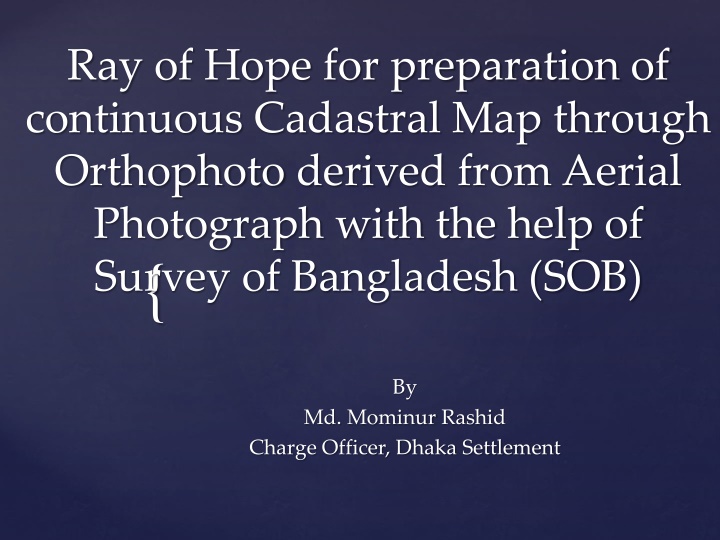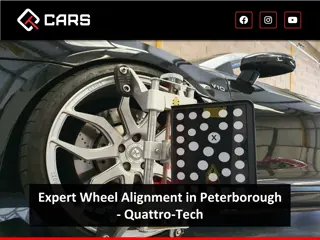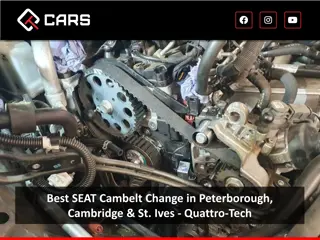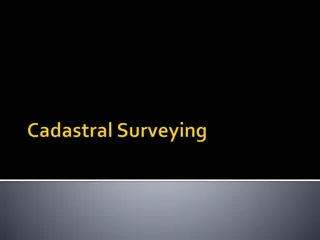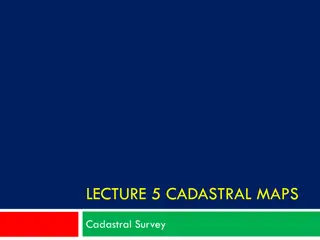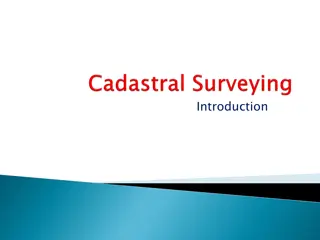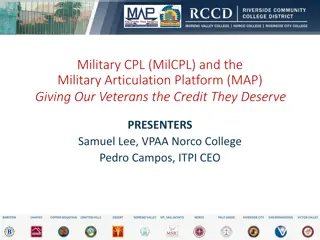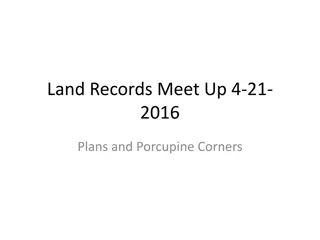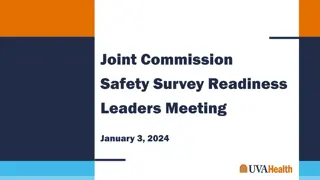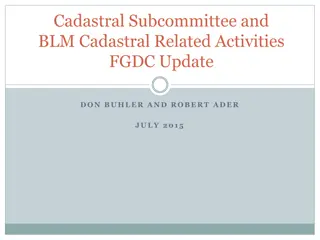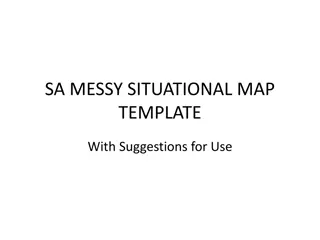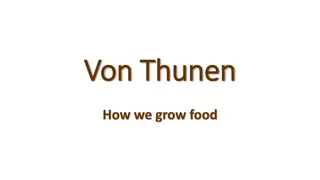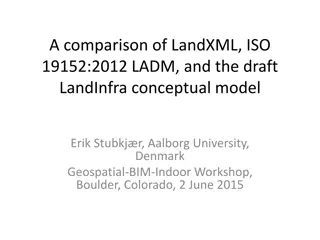High-Tech Survey Methods for Continuous Cadastral Map Generation
Generation of cadastral maps through advanced survey techniques using ortho-images, DGPS/GNSS, and ETS. The process involves obtaining boundary vectors from ortho-images, surveying obscured areas with DGPS/GNSS and ETS, and integrating datasets in a GIS environment. The objective is to create continuous mouza maps efficiently, store them digitally, and establish a Land Information System for revenue administration and development planning. The methodology includes acquiring topographic map data from Survey of Bangladesh, plot-level vectorization, and map generation utilizing digital stereoscope technology.
Download Presentation

Please find below an Image/Link to download the presentation.
The content on the website is provided AS IS for your information and personal use only. It may not be sold, licensed, or shared on other websites without obtaining consent from the author.If you encounter any issues during the download, it is possible that the publisher has removed the file from their server.
You are allowed to download the files provided on this website for personal or commercial use, subject to the condition that they are used lawfully. All files are the property of their respective owners.
The content on the website is provided AS IS for your information and personal use only. It may not be sold, licensed, or shared on other websites without obtaining consent from the author.
E N D
Presentation Transcript
Ray of Hope for preparation of continuous Cadastral Map through Orthophoto derived from Aerial Photograph with the help of Survey of Bangladesh (SOB) { By Md. Mominur Rashid Charge Officer, Dhaka Settlement
Introduction/ Ray of Hope Generation of Cadastral maps is possible through High-tech survey methods using Ortho-images, DGPS/ GNSS and ETS. Cadastral boundary vectors obtained from ortho- images are used as base maps and obscured/difficult areas (not delineated/mapped from ortho-images) are surveyed using DGPS/GNSS and ETS. The vector datasets thus derived through Remote Sensing/DGPS/GNSS/ETS survey are integrated in GIS environment to generate the base cadastral vector datasets for further settlement/ title (ROR) confirmation activities.
Objective: To generate cadastral maps by using high-tech survey methods using topographic map derived from ortho-images, DGPS/ GNSS and ETS. To get continuous series of mouza maps in limited time. To store the cadastral maps in digital format (storing & updating cadastral maps using state-of- art technology) and to use this as base for all type of revenue administration and development planning. To generate Land Information System (LIS) for Tahasils/ Country. To Lower the cost of Cadastral survey. To speed up map generation with minimum time.
Methodology Survey of Bangladesh (SOB) has high quality topographic map based on ortho-photo derived from Aerial photography. Acquisition of digital stereo topographic map data from Survey of Bangladesh (SOB).
Methodology (cont..) Plot level vectorisation & map generation from topographic map (ortho image) through digital stereoscope.
Picture of Digital computerized 3D Stereoscope. Here if plot corner is given as click in one monitor then plot layout is made automatically in another monitor
Map Preparation Through stereoscope machine
Methodology (Cont..) Establishment of GCP control network by DGPS/ GNSS. Collection of existing cadastral maps & Coding/ Scanning/ Digitization of maps will be made. Delineation & confirmation of village boundary will be made. Integration of Existing Mouza map for plot index, khas land demarcation, and boudary demarcation. Survey and mapping of difficult areas through ETS/ Integration of vectors and preparation of base maps Map printing (output generation) and field checking/ ground truthing is made. GIS Database Creation made.
Why ground truthing is made? Field boundaries obscured by tree cover (Vertices closed by field measurements) Plot boundaries not clear on the image Govt. land under holding (cadastral plot showing subplots on image) by individuals Acquisition of plots (road and other infrastructure like Tank/ Canal/ Water Harvesting Structures (WHS) showing no plot boundary on image but multiple plots on cadastral map & Record of Rights (ROR) Alteration of plot boundaries (locally) by owners Verification of same plot in ROR Encroachment of land (Temple/ Trust board land, canal and road side, Government land) for which cadastral plot boundary and image boundary not matching Water channel (disused) encroached by nearby plot owners.
Why ground truthing is made? (cont..) Cadastral map showing two plots but on the image it is one plot Cadastral map showing one plot but on the image it is two plot Boundary plot (village boundary) truncated due to acquisition of adjacent plot of another village by same owner and subsequent removal of common boundary Village boundary (boundary plot) vector changed after construction of Water Harvesting Structures (WHS) Linear measurements in two villages to check the map accuracy Sample DGPS observation on plot corner (vertices) and post plotting for accuracy checking Ground truth on zero fill parcels, part/divide /Joint parcels were undertaken and Geocoordinates were taken up using DGPS (RTK) at few checkpoints for accuracy checking.
How Accuracy Checking is made? Accuracy of data sets will be checked in 3 steps. First step involves comparison of geo- coordinates (of randomly selected points) generated by computer with that of actually observed through DGPS. Second step involves comparison of length measurement (of tie lines) generated by computer with that of actual field measurement. Third step involves comparison of boundary measurements (of randomly selected parcels) generated from image data set with that of actual field measurements. The results of
Benefits Within one day 1 Draftsman can produce 1 or 2 mouza map (80% work) in staying office. 20% work will be done in field using GNSS/ ETS/ etc. No extra money expenditure will be needed for data collection purchase of extra ETS/ GNSS machine. One time expenditure will be needed for purchasing data from SOB and purchasing Digital Computerized 3D stereoscope.
Thanks {
